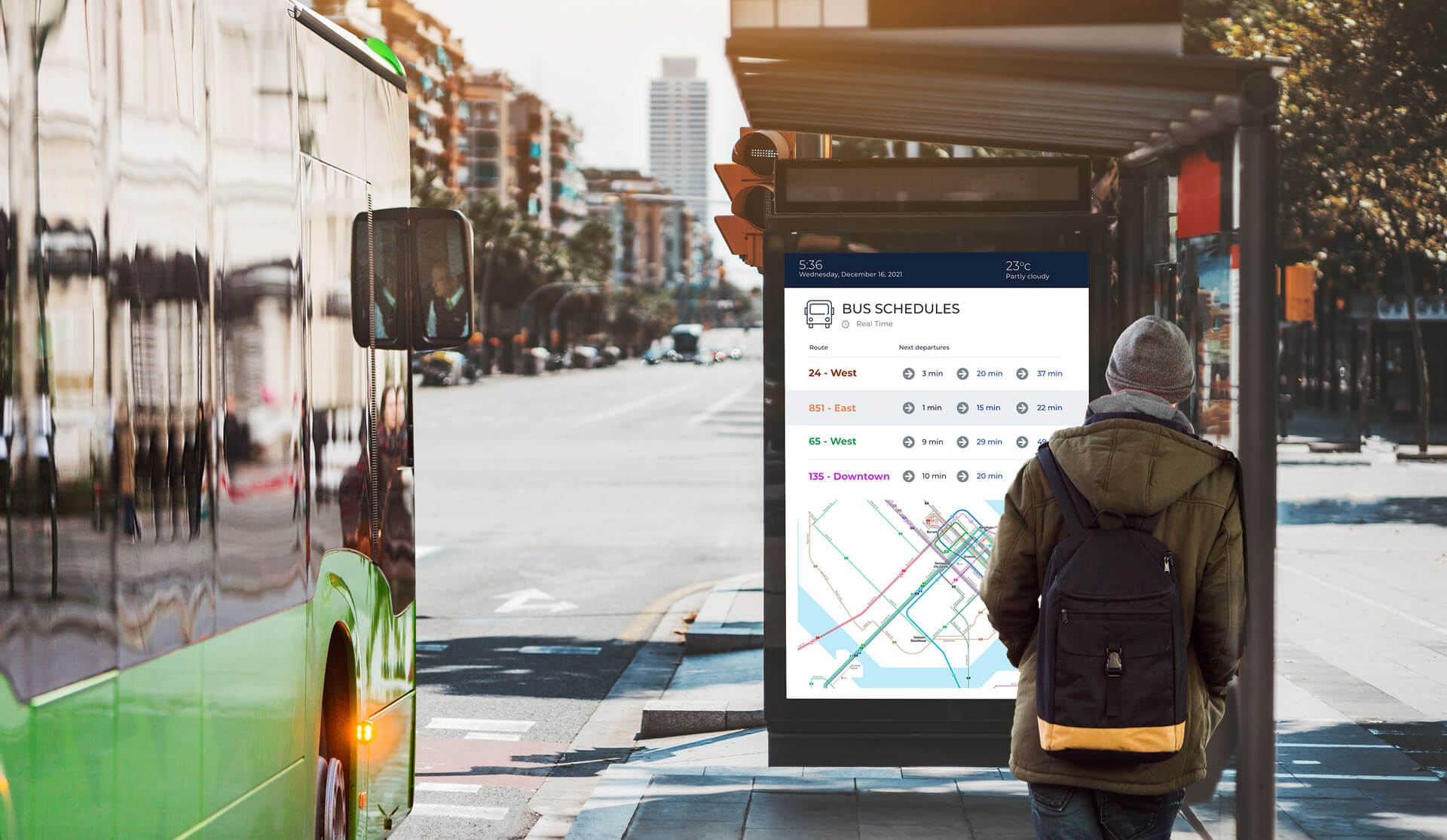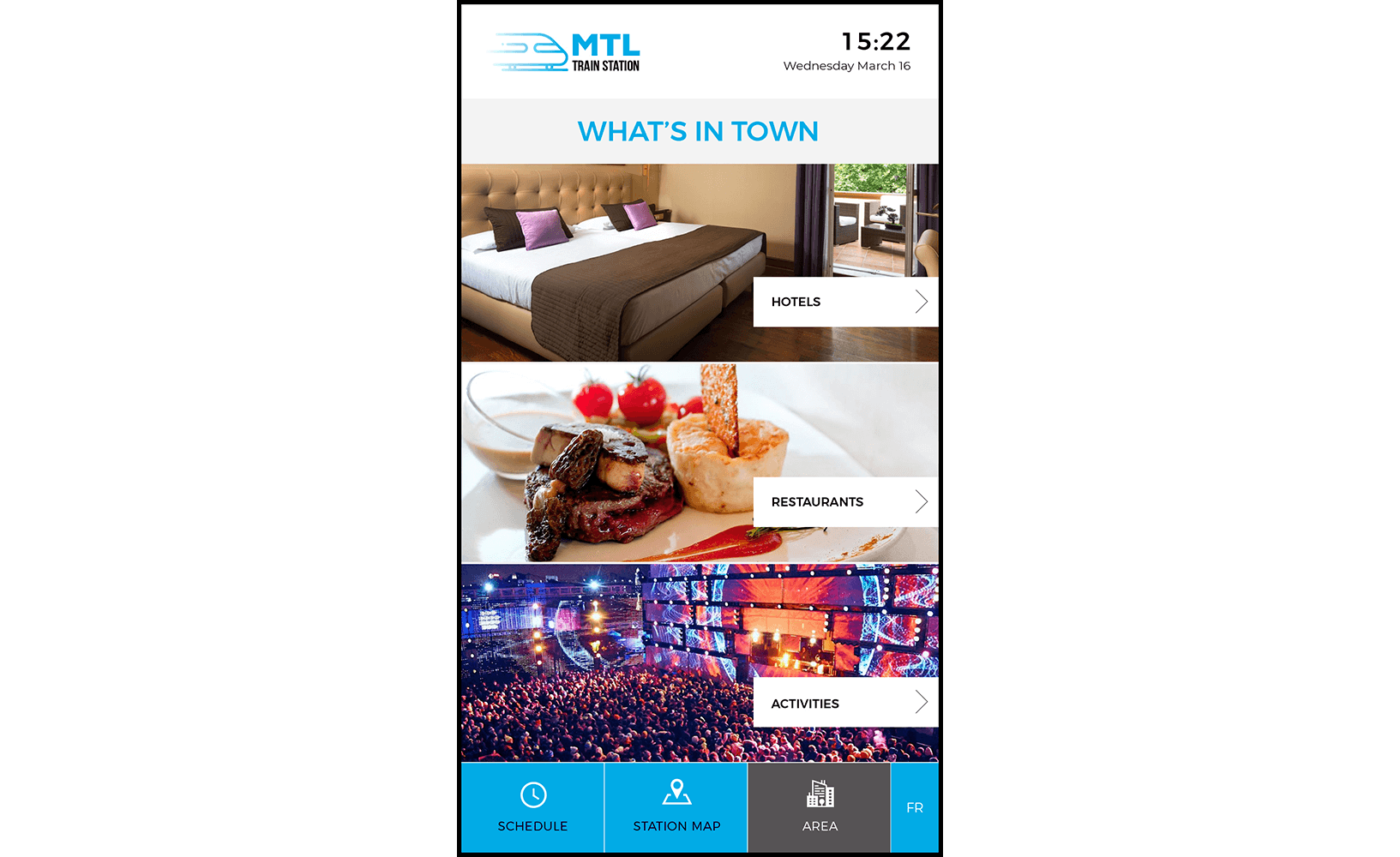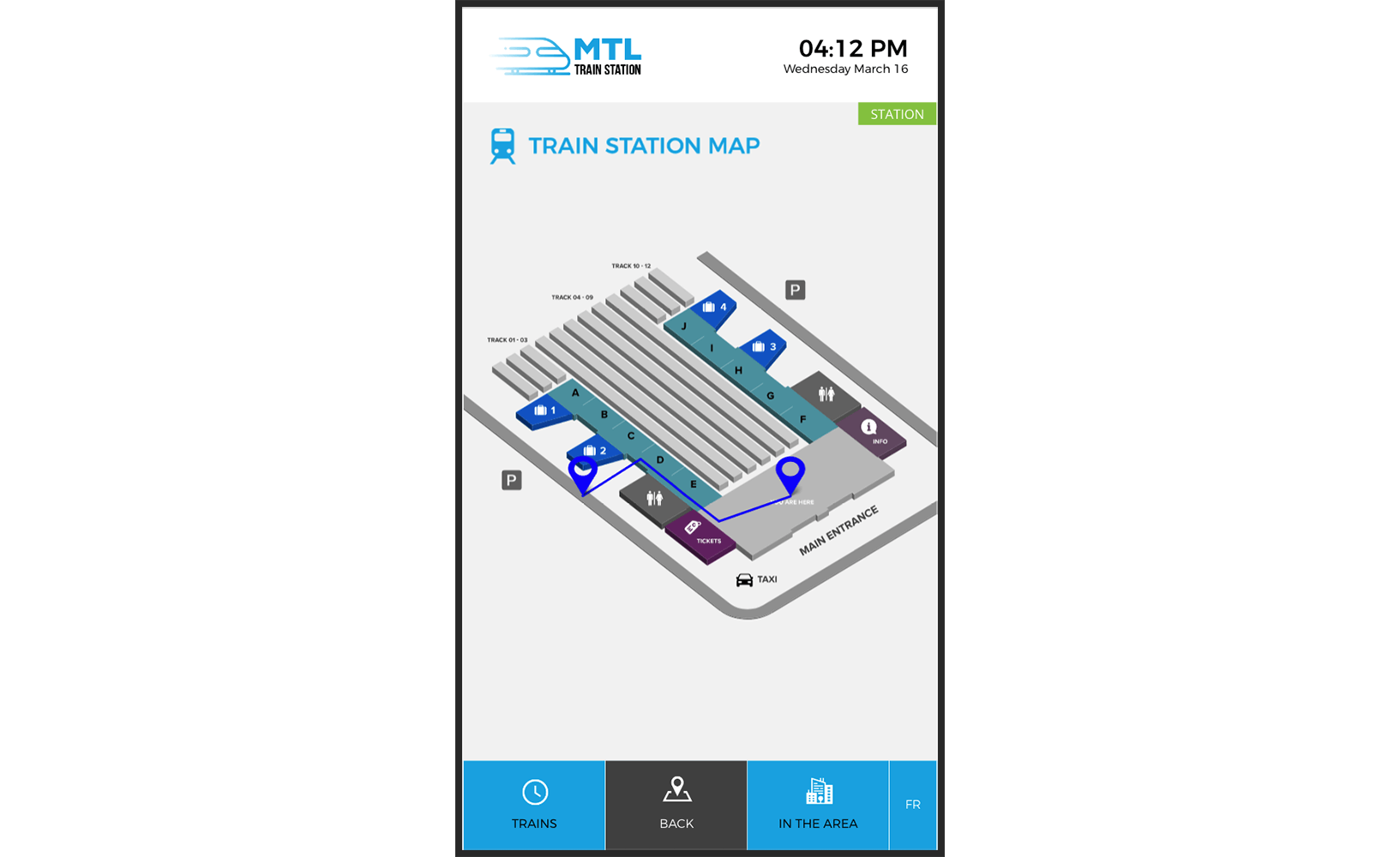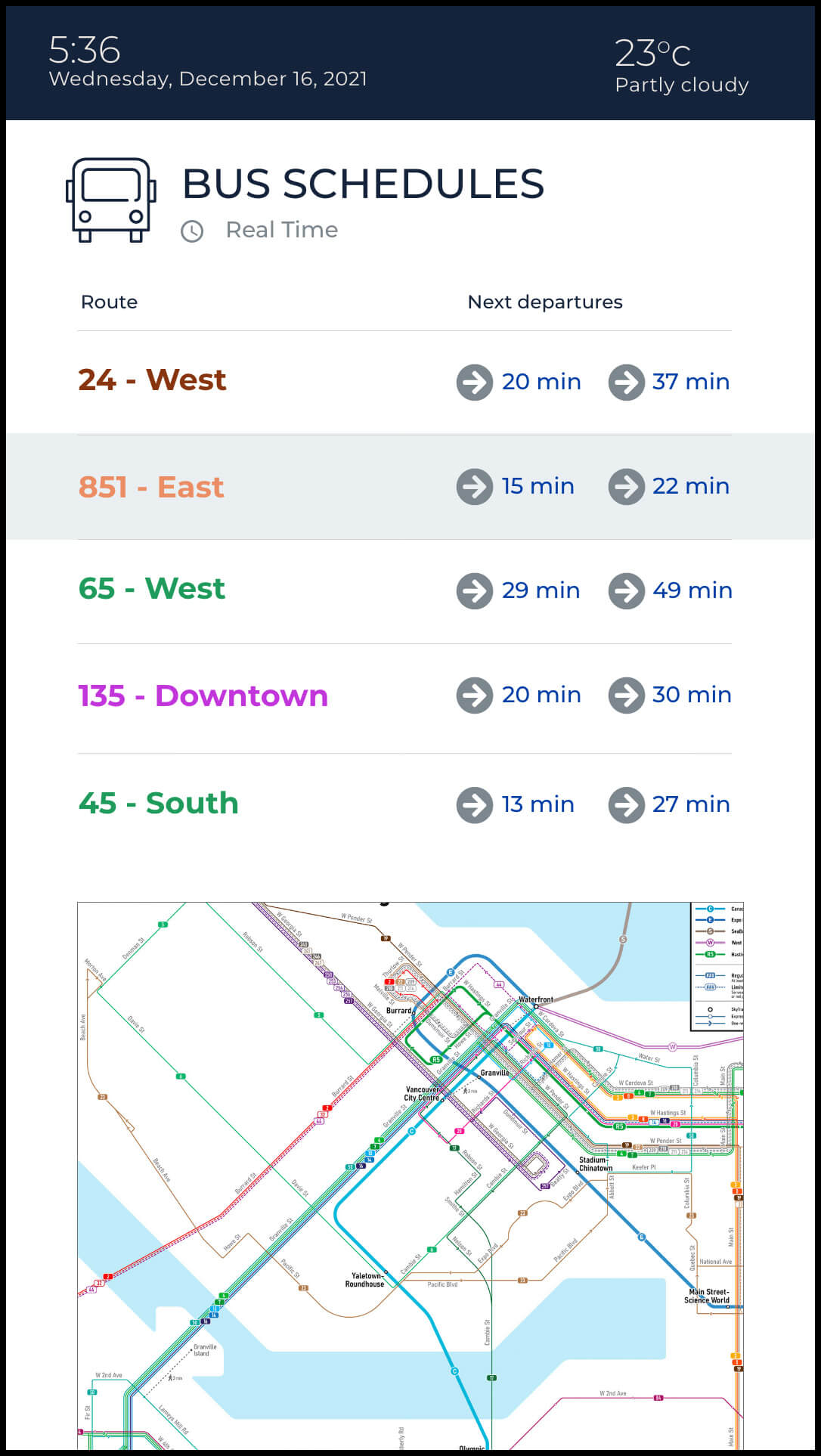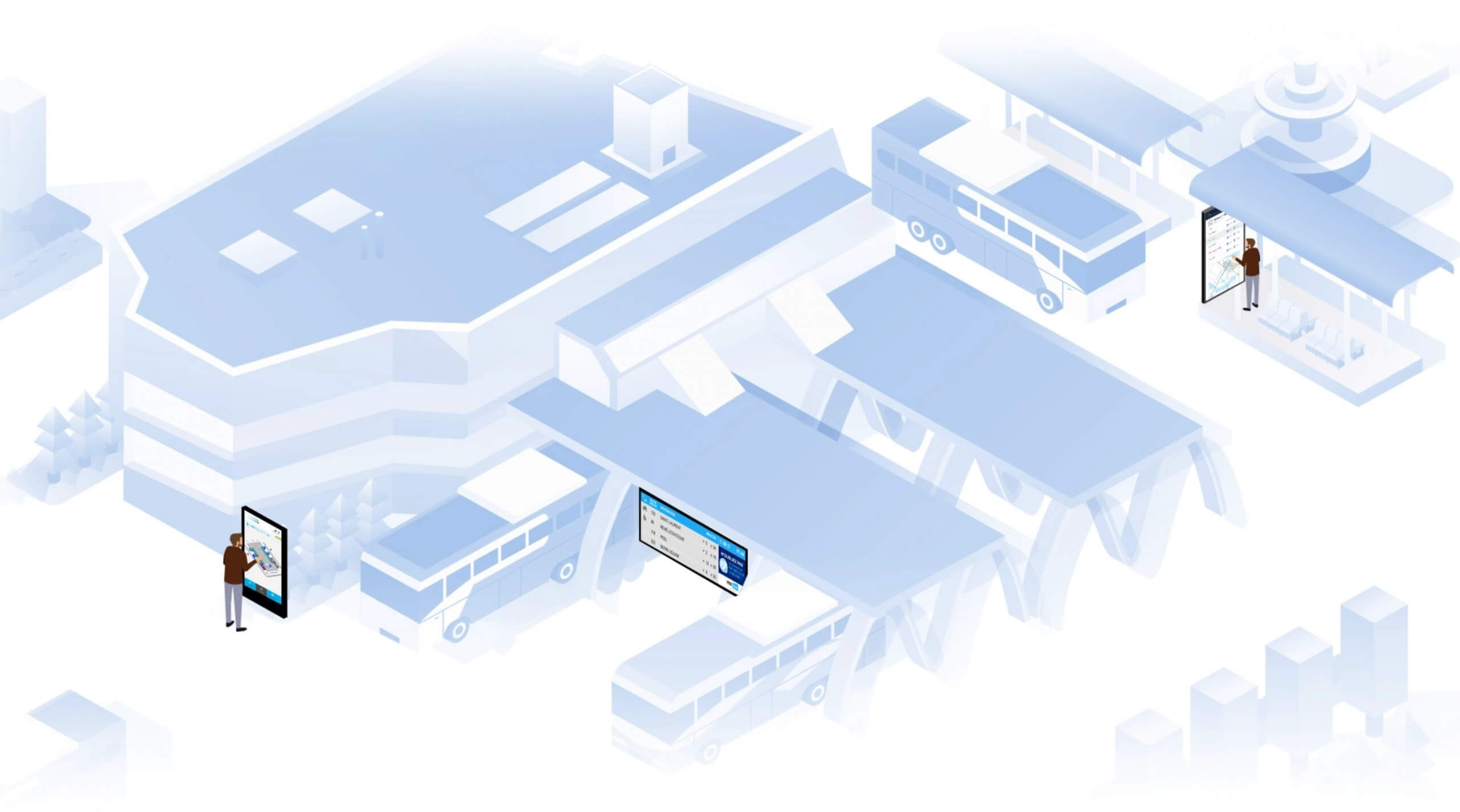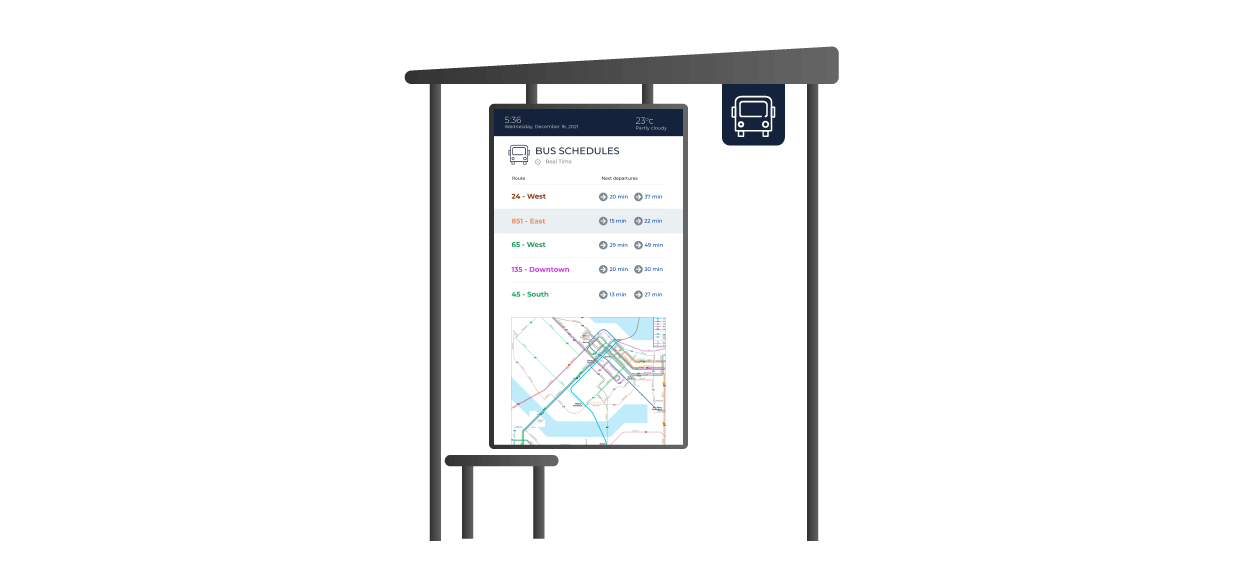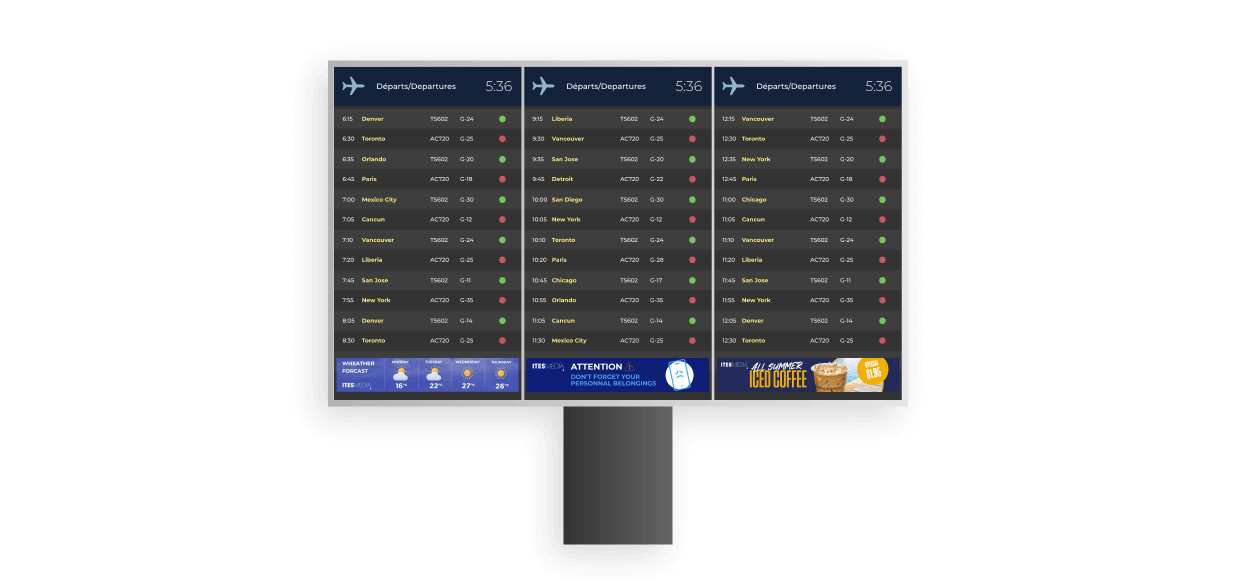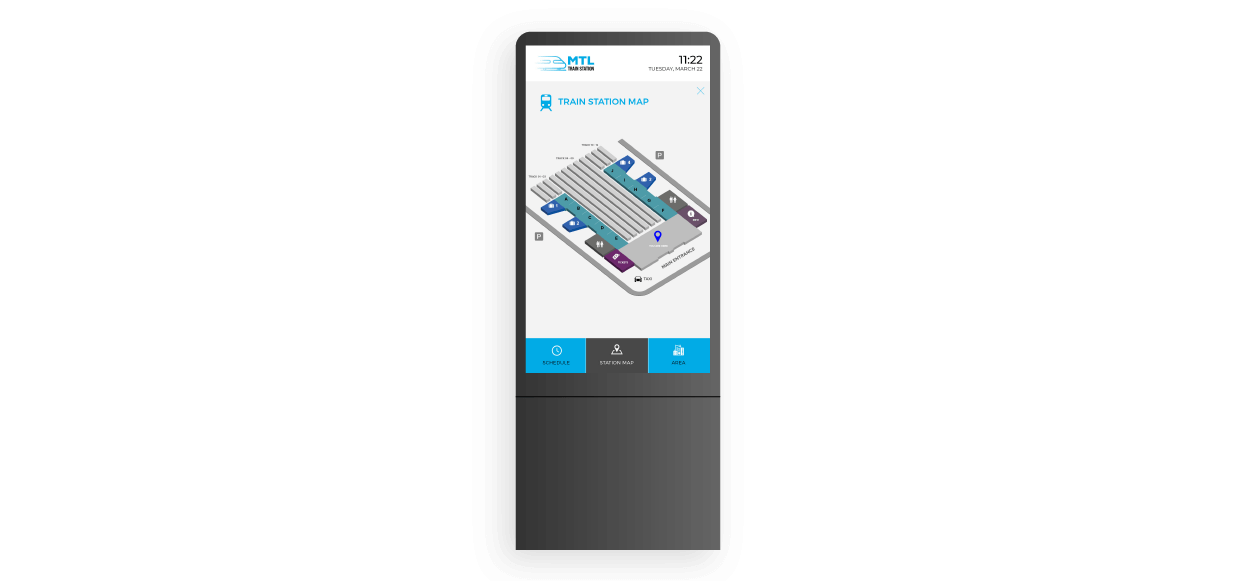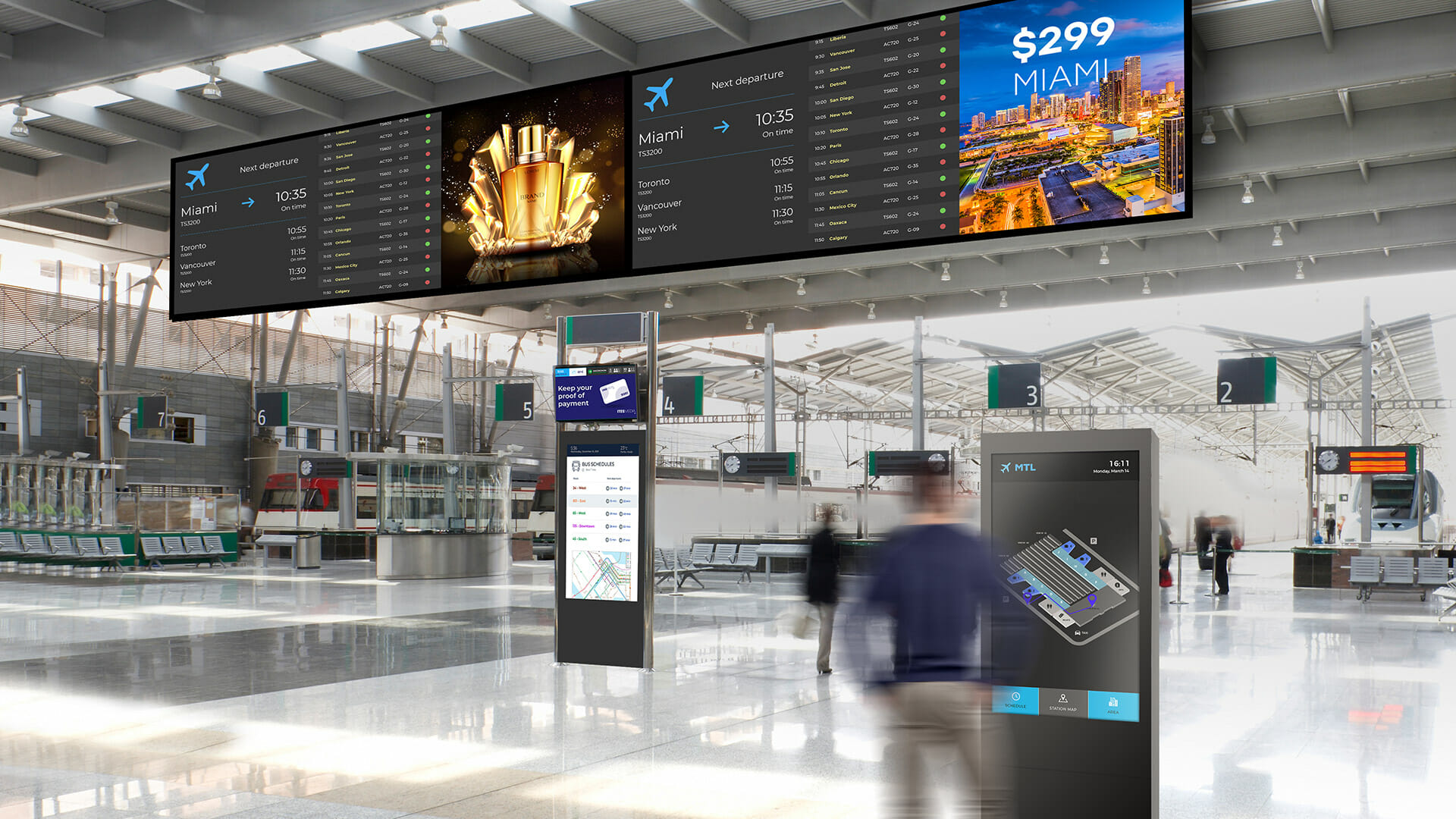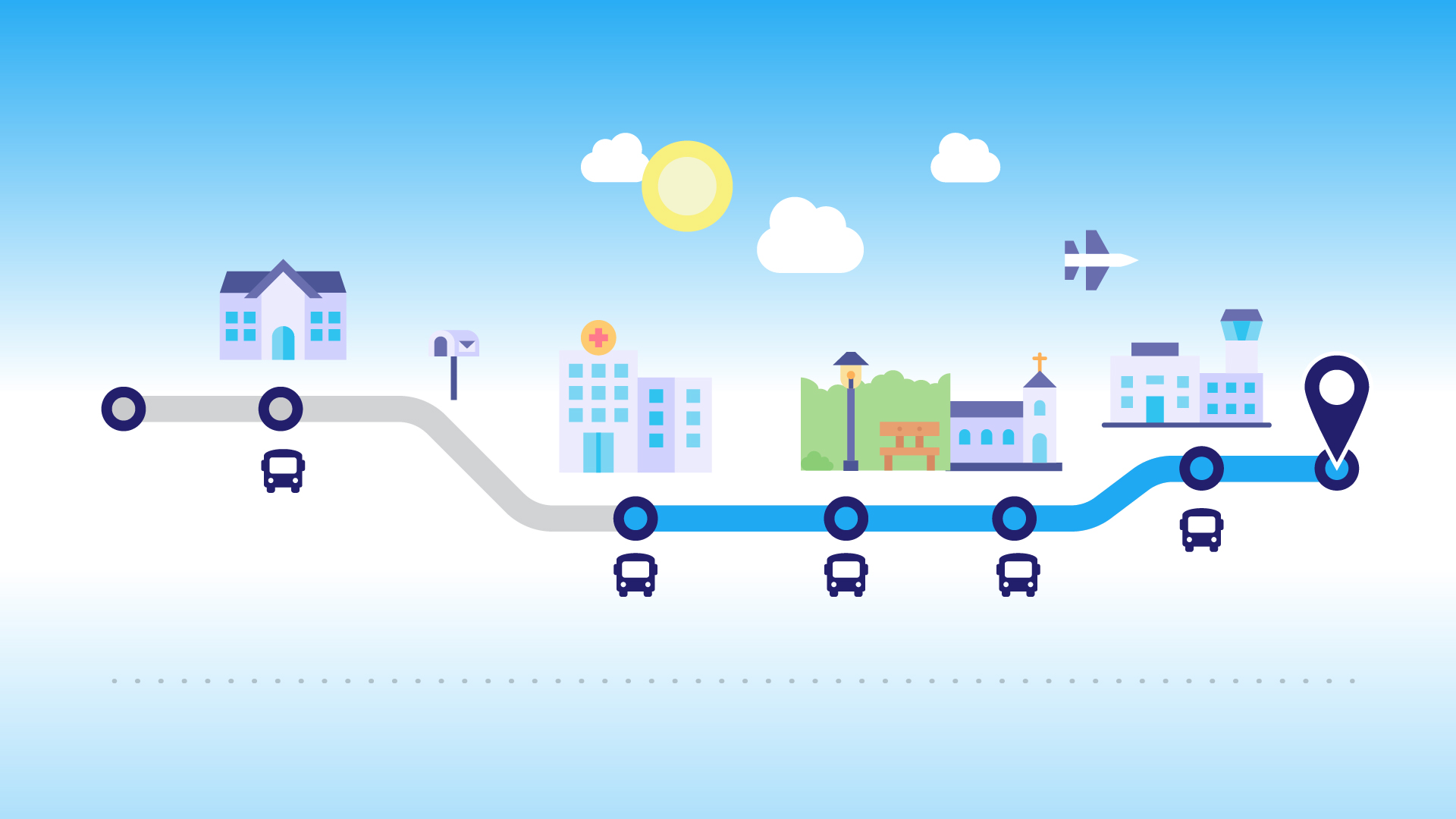-
Help your passengers travel more easily
Improve your users’ experience with an intuitive and efficient passenger information display system to share information in real time.
 VIEW A DEMO
VIEW A DEMO

Passenger information display system
The ITEStransit real time passenger information display system (PIDS) is a control hub for visual communications with passengers. It is designed to facilitate the management of a digital display network and to reliably share available information with users when they are in an airport, a bus shelter, a train or metro station.- Integration with GTFS/RT and SIRI data sources
- ADA-compliant content
- Integration with customized data sources through API, JSON and XML
- Integration with Computer-Aided Dispatch / Automatic Vehicle Location (CAD/AVL) systems
- Customizable, multi-level display priority (schedules, detours, cancellations, emergencies, etc.)
- Centralized and remote display management and monitoring through an intuitive cloud-based interface
- Convenient status display of the entire network (including a map view)
- Live content preview
- Simplified creation, editing and planning of your content and your playlist
- Quick and simple message creation with a customizable template library and a complete content editor
- Integration with social media (Facebook, YouTube, etc.)
- Display RSS feeds, the weather and the time
- Multimedia passenger information (text, images, videos)
- Access and permissions management
- Screenshots and proofs of play
- Alert notifications and integration with your monitoring and ticketing tools
LEARN MORE
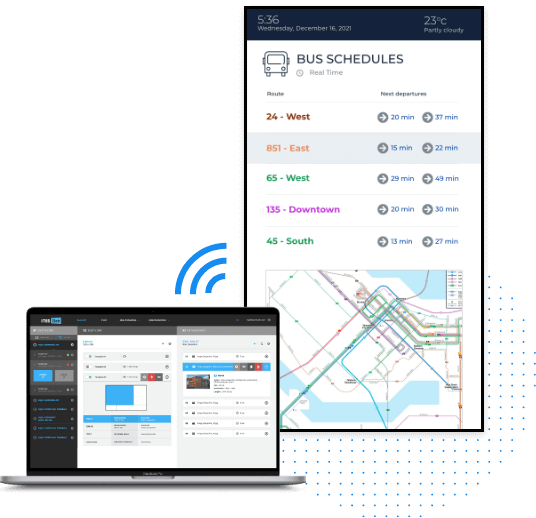
Our platform is compatible with
Many types of information to share
Real-time passenger information
Real-time passenger information
Make waiting times seem shorter and reduce your users’ stress by sharing in real time the schedules of incoming buses, the status of the service as well as any delays.
- Planned and real-time schedules of the next arrivals
- Accessibility, peak times and imminent departures
- Disruptions and cancelled routes
- Best routes and alternative options
- Real-time display of bus and metro occupancy levels
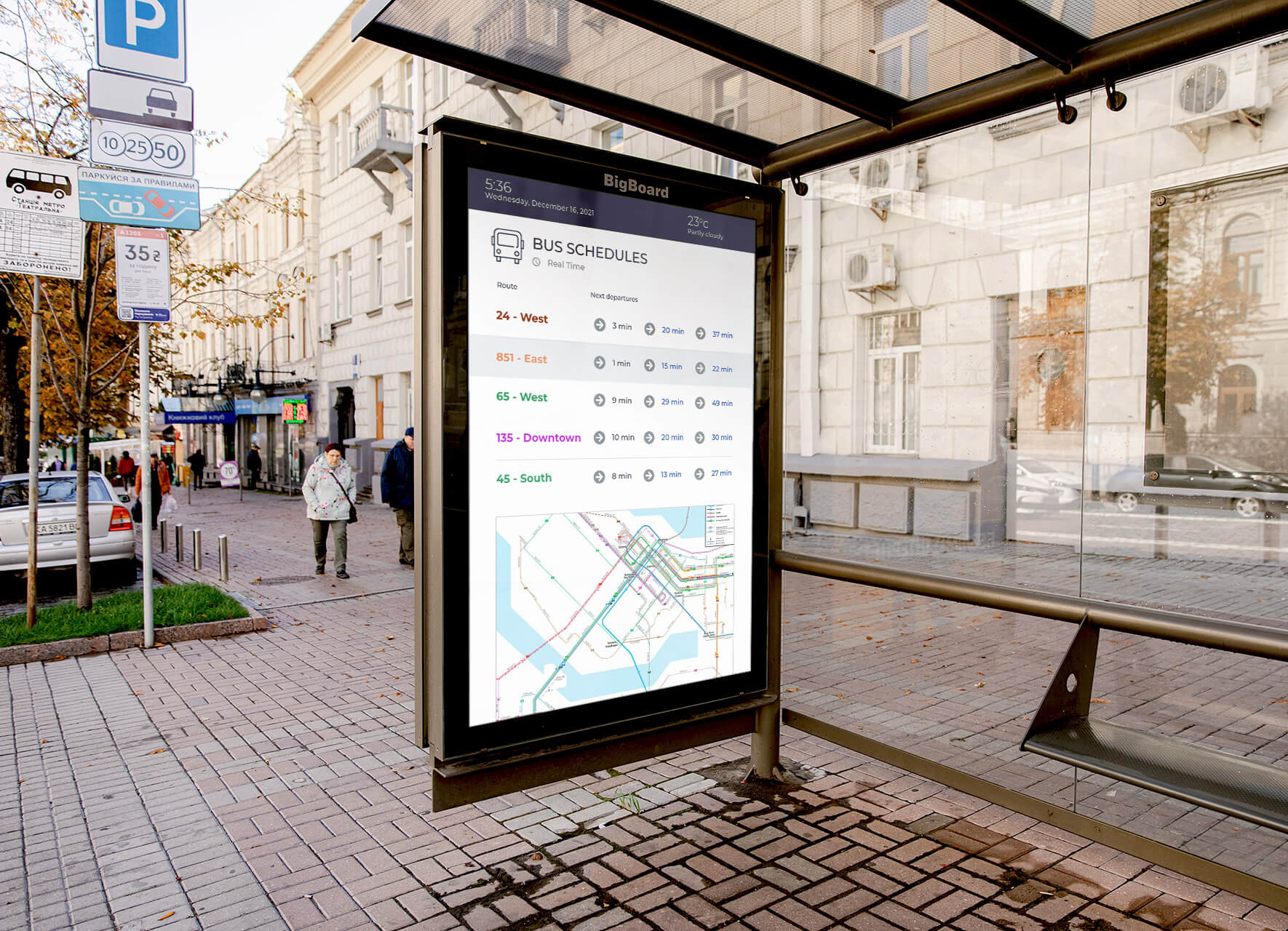
+
-
Emergency messages
Emergency messages
Digital displays in metro and train stations and in bus shelters can be used to share emergency messages such as:
- Amber alerts
- Emergency evacuations
- Identifying the nearest exit
- Fire alarms

+
-
General interest messages
General interest messages
Keep your passengers informed on various topics. These messages can be shared in a predefined screen zone, or alternately displayed in other content types.
- News
- New features (e.g.: available Wi-Fi)
- Rules and regulations
- Fares

+
-
Advertisement space
Advertisement space
Maximize your income by using advertisement campaigns. Promotions can be tailored to targeted audiences.
- Restaurants (near metro or train stations)
- Shows
- Movie theatres

+
-
Interactive wayfinding system
One of the main concerns of travellers is to know how to go to a specific location. Whether in an airport or in a train or metro station, the digital signage wayfinding feature helps users find important places:
- Directions to the right boarding site
- Information desk
- Ticket counter
- Baggage claim
- Washrooms
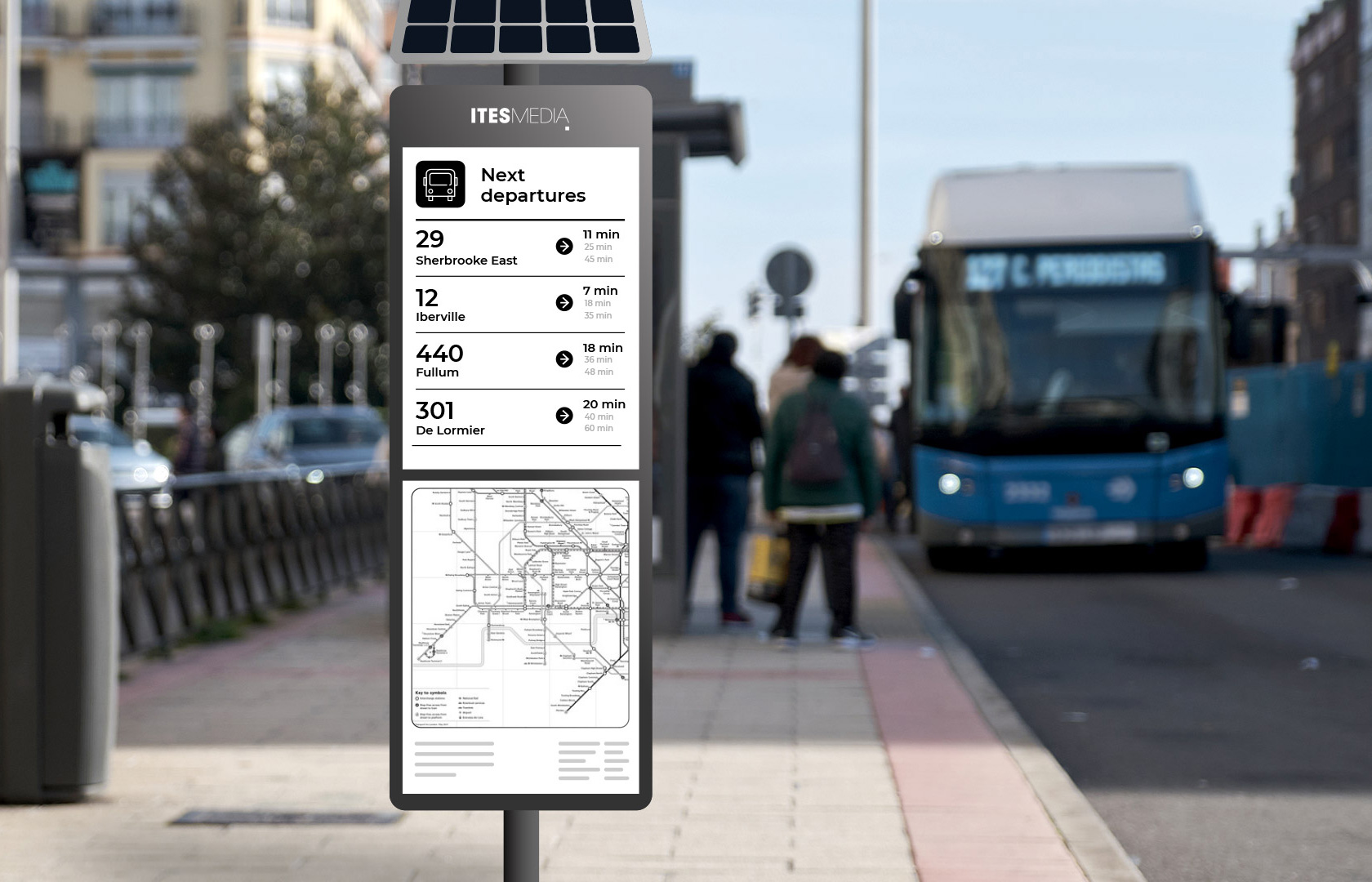
ePaper displays
ePaper displays are easily recognizable due to their luminosity and the fact that their light is softer while still ensuring excellent readability. There are many benefits of using e-Ink for passenger information systems.
Benefits
- Lower costs and uses less energy
- Battery-operated
- Solar-powered
- Designed for indoor and outdoor use
- Easier readability
Highly secure solution
Two-factor authentication
Activate the two-factor authentication feature for enhanced security.
Password management
Set up the password creation requirements for users within an organization.
Azure
Highly secure hosting solution used by 95% of Fortune 500 companies.
Single Sign-on (SSO)
Use your users’ Active Directory accounts to connect to the ITESLIVE studio.
Works on all display types
The passenger information display system can be used on LED, LCD and E-Ink/ePaper displays as well as with touchscreens, video walls and variable message sign (VMS) displays.
